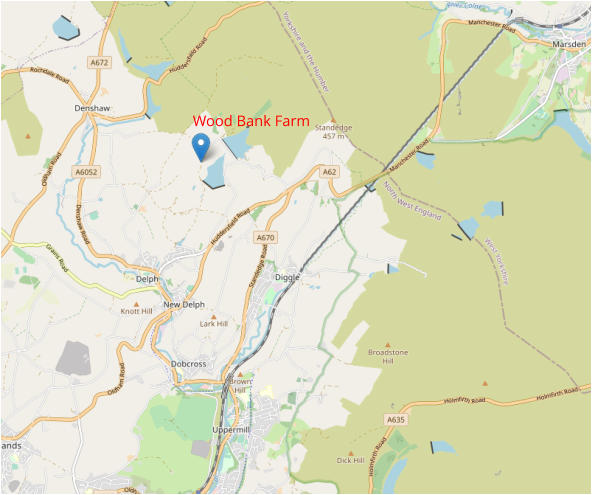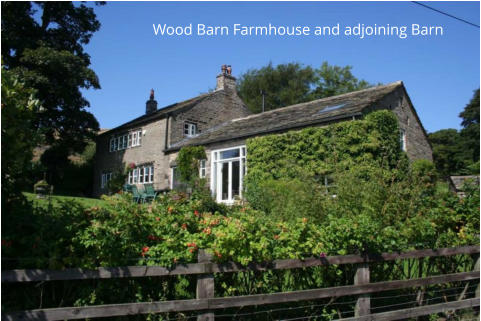

Castleshaw is a hamlet in the Saddleworth parish of the Metropolitan Borough of Oldham in Greater Manchester, England. It lies amid the Pennines,
2.4 miles north of Uppermill, 3 miles west-southwest of Marsden, and 5.3 miles east-northeast of Oldham.
Historically a part of the West Riding of Yorkshire, Castleshaw is most notable for the Castleshaw Roman fort, the remains of an ancient castrum. There
are two reservoirs, Castleshaw upper reservoir and Castleshaw lower reservoir. Today, the mainstay of the Castleshaw Valley is farming with local
people and visitors using the Valley for its many recreation opportunities such as walking, cycling and fishing.
From the Saddleworth parish registers the majority of the people involved in domestic textile working were described as clothier, with the term weaver
only rarely occurring. This suggests a clear manifestation of the dominance of the small family clothier in the Pennine woollen industry at this time. The
woollen cloth woven in Saddleworth was produced by small clothiers who rarely employed any persons outside their own family units. Any putting-out
system, whereby manufacturers distributed the raw material to domestic weavers, was not taking place within Saddleworth to any great extent during
the eighteenth century.
In Castleshaw a church register record of 1721 describes
Edmund Buckley of Wood as a clothier, a similar attribution is
given to James Platt of Broadhead in 1726, Isaac Bradbury of
Castleshaw in 1749, John Shaw of Oakenhill in 1747, Benjamin
Gartside of Oakenhill Lee in 1782, and Thomas Platt of Waters
in 1726. Old photographs of now demolished buildings such
as those at Castleshaw and surviving buildings such as Mill
Croft and Wood Barn with their characteristic multi-light
mullioned windows providing light for loom workers, provide
further testimony to this domestic textile industry. Lower
Moorcroft Wood, a farm situated in the upper Castleshaw
valley but long since demolished, has left to posterity an
interesting description provided by a former occupant which
gives an insight into the arrangement that many of the farms
may have had. As well as having a barn and shipon, indicating
farming activity, the upper storey of the house was described
as follows:
It had a long row of mullioned windows, and had been
designed to accommodate hand looms and things
appertaining to hand loom weaving, and only on second
thoughts was it sleeping accommodation. There still remained there two hand
looms, a bobbin wheel, a hand jenny, and some warping waws (walls). There
were also skips, baskets, beams, empty bobbins, and various other articles
used in the weaving of cloth around the place. These had belonged to my
grandfathers elder brother, who had been a small manufacturer on his own,
marketing his cloth in Huddersfield.
The general picture provided by this description is in keeping with the other
evidence consulted, indicating farmers supplemented their living with
domestic textile manufacturing, which was also carried out within their homes.
Rather than being involved in a putting-out system it would appear that these
farmers were independent clothiers, who undertook trading activities as well.
Wood Barn, a grade 2 listed building, is a farmhouse and adjoining (converted)
barn of mid-18th century date. The house displays characteristic elements of
local architecture of this period, such as watershot stone work, a stone slate roof and recessed flat-faced stone mullion windows. A William Wood,
described as a clothier lived here in 1757. Like many of his contemporaries he had a dual income and this was evident in the building; farming being
represented by the barn and weaving as indicated by a row of mullion windows.







